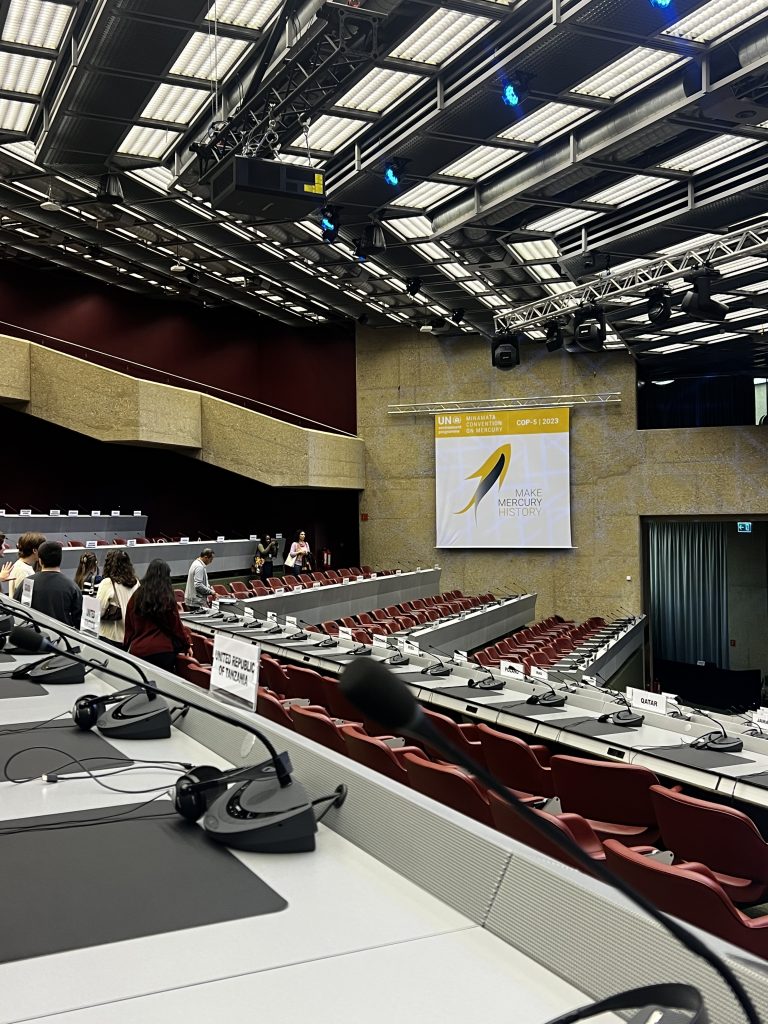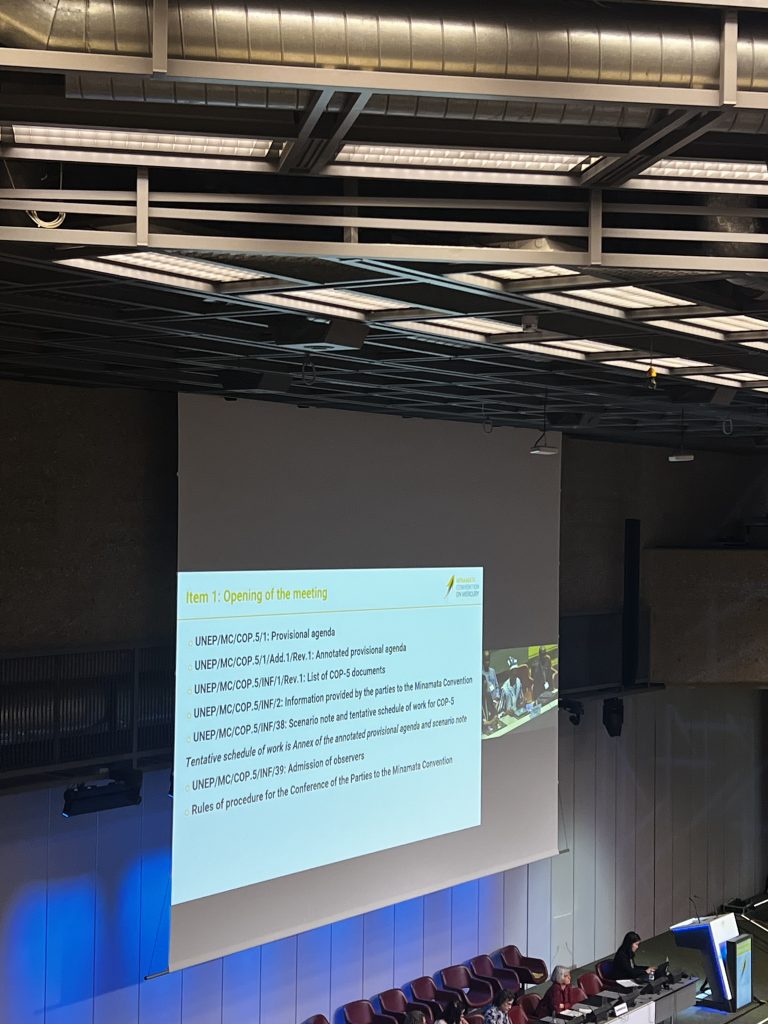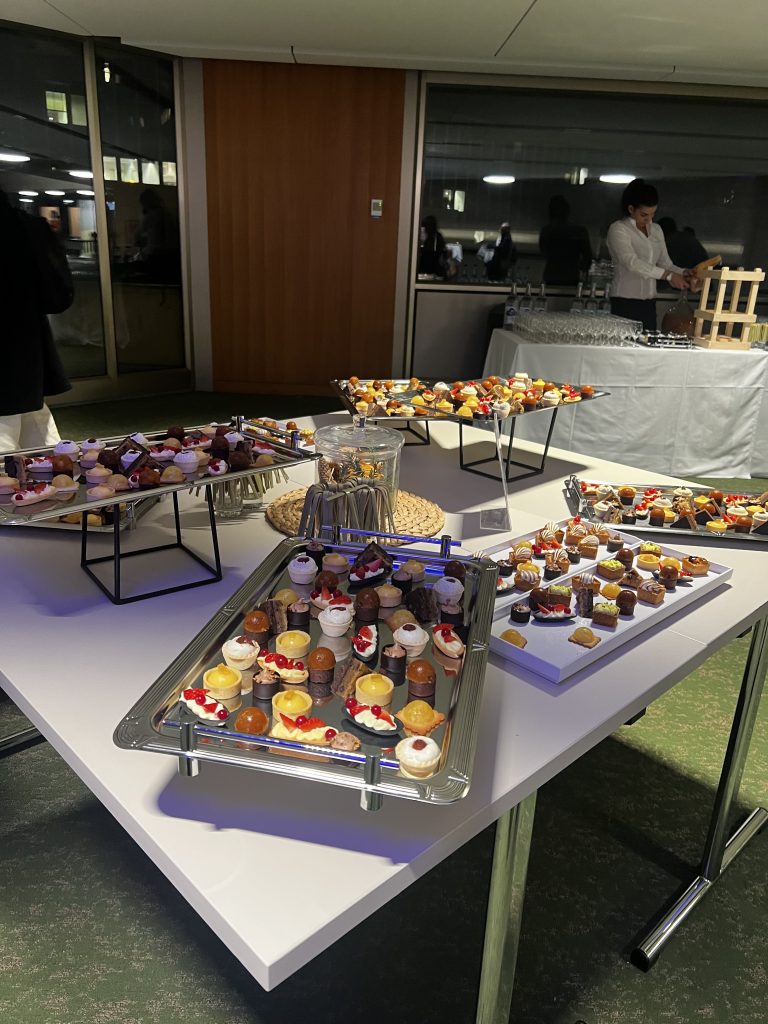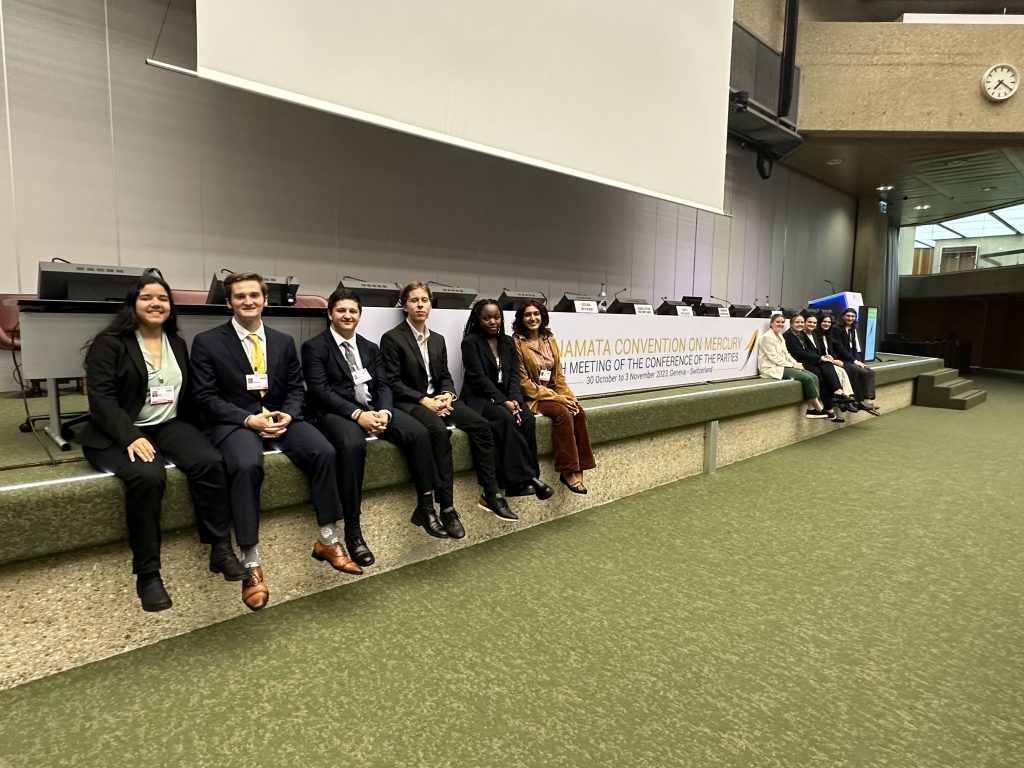By Ananya Chandra
Today was our first day of committee at COP-5 to the Minamata Convention in Geneva, Switzerland. The introductory session began at 10am, and opened with a lovely Swiss concert trio consisting of a baritone, soprano saxophone, and an accordion player. It was a jovial opening to what was about to be a super long day! Opening statements commenced soon after, with words from in-person and virtual speakers including the Executive Director of the UNEP, the Executive Secretary to the Convention, the President of COP-5, as well as a member of the South American Yanomami tribe, and Minamata Diseases survivors, Mr. and Mrs. Sato. Their words were hopeful, outlined the severity of the public health issue of mercury and the urgency of reaching a resolution, and thankful for funders to the Convention and the external efforts made by parties to prepare for the meeting. A key point made here was that the Minamata Convention was central to many other environmental initiatives, especially the Montreal Biodiversity Framework.
The first party speaker was Burkina Faso (second picture in gallery), who echoed the urgency of the issue of mercury and emphasized the need to come to a consensus regarding steadfast solutions. Burkina Faso cited the efforts and progress made by the Africa Group during their preparatory Regional Meeting this past September in Nairobi, Kenya, where they curated about 30 amendment proposals. This bold initiative would foreshadow the tone set for the rest of the day’s meetings, as the proposals made by the African region would shape and mold the delegates’ debates into the evening of this committee day. After Burkina Faso, COP-5 President Dumitru accepted speeches from regional representatives to serve as spokespeople to their bloc’s perspectives, goals, and priorities. This included Botswana from the African Group, who talked about the particularly negative impacts of mercury pollution on the continent, initiatives to phase out mercury within Africa’s national industries, and outlined 3 proposed amendments to Annex A & B of the Convention; Pakistan from the Asia Pacific Group, who called for increased funding, more conservative measures phase out mercury products, and reaffirmed their group’s commitment to the convention requirements; North Macedonia from the Eastern European States, who supported the proposals made by the African Group, demonstrated an eagerness for learning from other member states during the convention, and emphasized a need for additional funding for the cause; Chile from the Group on Latin America and the Caribbean (GRULAC), who advocated for national mercury benchmarks, emphasized prioritizing women and girls due to the gendered scope of the mercury issue, and spoke about the needs for more funding; and Spain from the Western European and Others group, who spoke about a commitment to the 5th COP, and the group’s desire to work collaboratively to achieve the goals of the Minamata Convention. After lengthy administrative speeches from the secretariat about committee proceedings, the plenary eventually began discussions about item 4, the review of the financial mechanism.
At 5pm, I moved from the Plenary to a contact group on Annex A & B. Here, the conversation was more specific and engaging. Parties were discussing the amendments brought into debate by the Africa Group, deliberating about regulating mercury in fluorescent lighting (CFL.i and CFL.ni), mercury in cosmetics (mostly skin lightening creams, used heavily within Asia and Africa), and mercury in dental amalgams. And the debate was fruitful! Apart from some disagreements about starting years for implementation (2025 vs. 2027 vs. 2030), most parties were on the same page about progressing with these regulations and amendments to improve the global situation on mercury! This was both inspiring and exciting, and the evening was rounded off with a lovely reception on behalf of the Swiss, with plenty of hors d’oeuvres and desserts!



